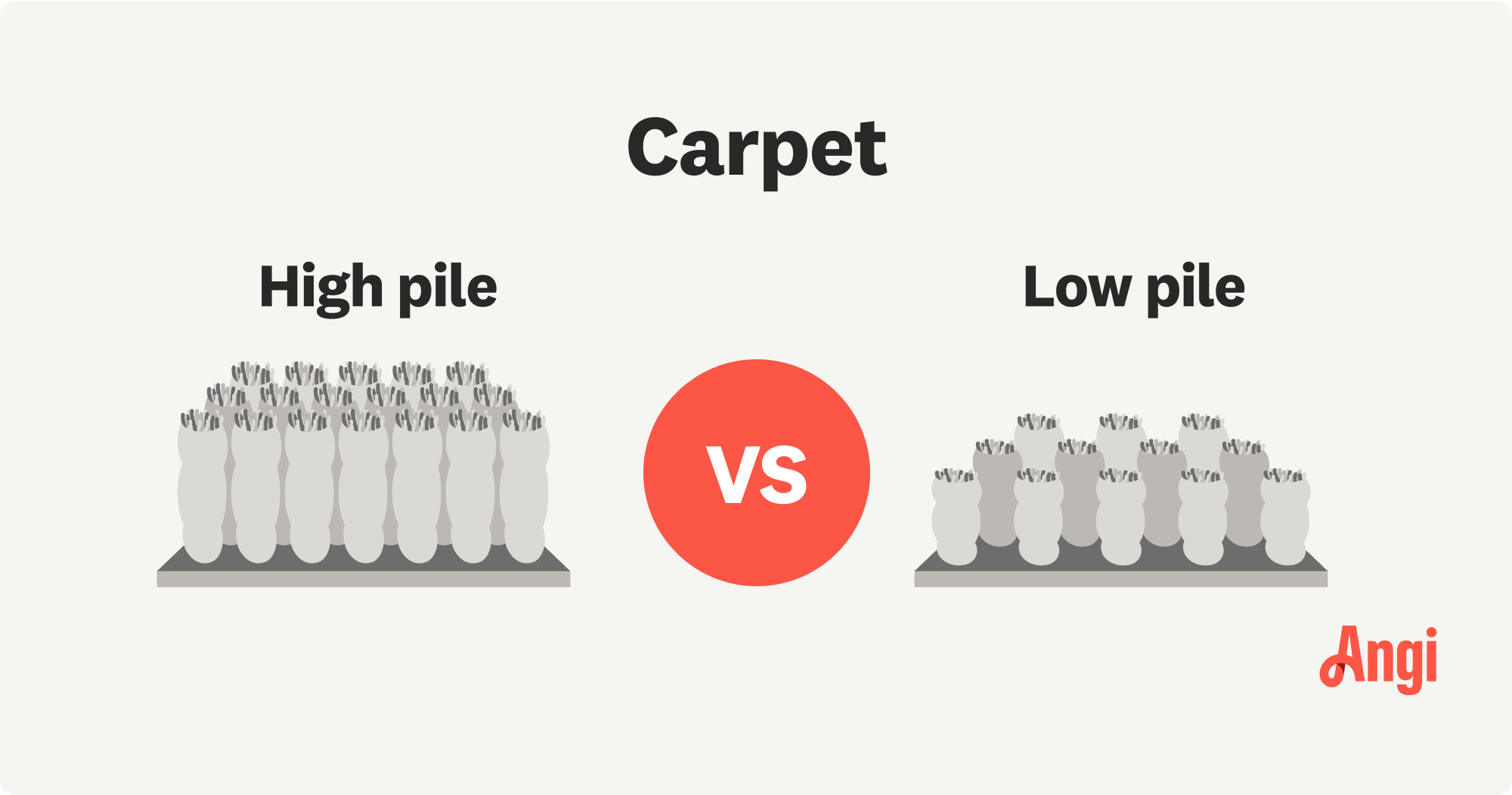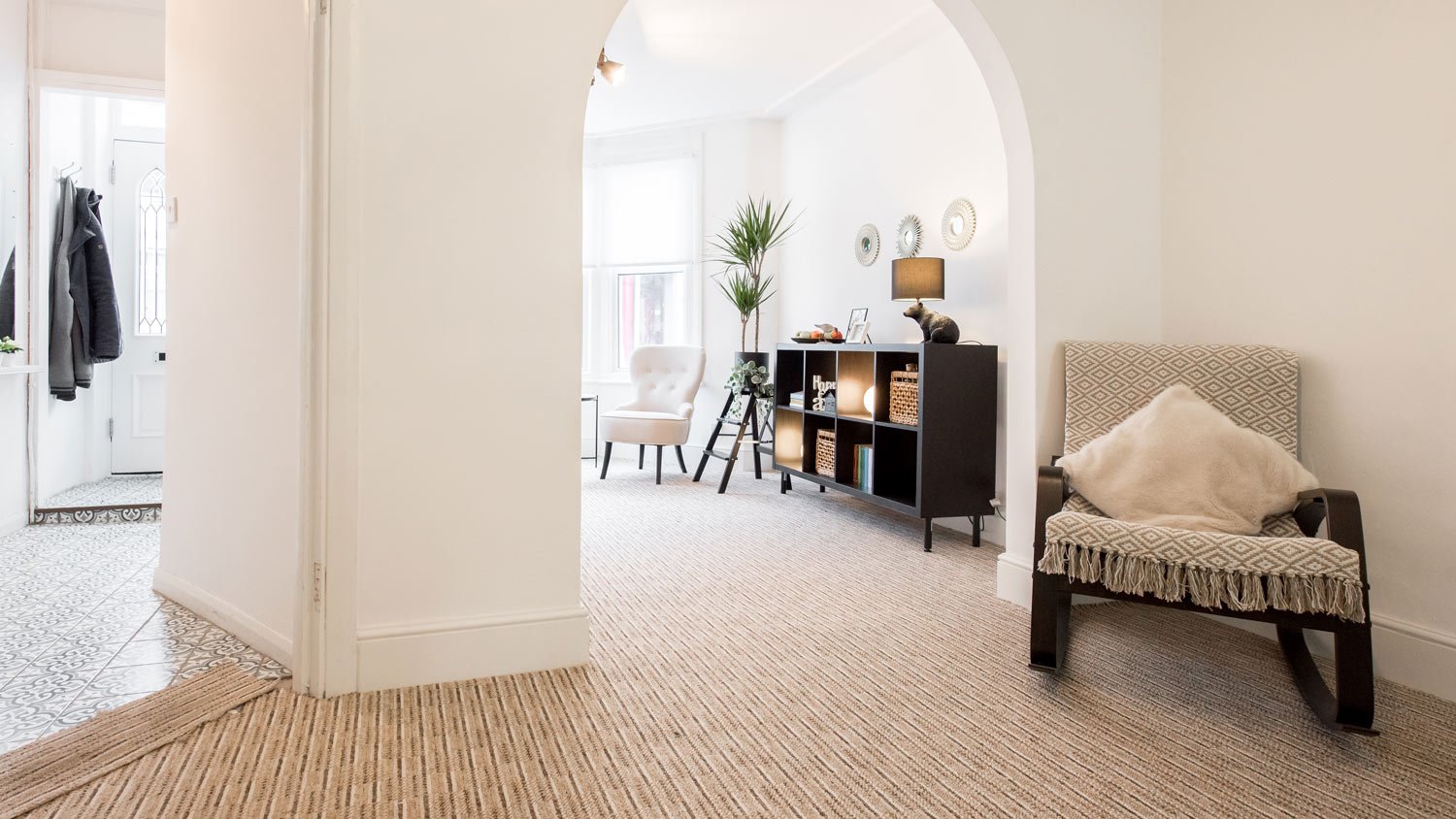
Not only are carpet tiles easier to install than carpet, but they’re often more affordable. So, how much does carpet tile installation cost? Let’s take a look.
For when you want something low-key, low-profile, and low-maintenance underfoot


Low-pile carpet is a type of carpet that’s flatter than high-pile carpet and has short, dense loops.
Carpets with fibers 1/4-inch tall or less are considered low-pile carpet.
Low-pile carpet is great for high-traffic areas, such as entryways or living rooms.
Low-pile carpet has short fibers and a flat, dense look. It’s like the buzz cut of the carpet world. Unlike high-pile carpet, which is fluffy and luxurious, low-pile carpet is all business. Its smoother surface fends off stains and holds up well to lots of foot traffic. Here’s what you need to know before choosing a pile height.
Low-pile carpet is a type of carpet made up of short strands of fiber, often just 1/4 of an inch high. These short strands may form loops or be cut straight across the top. Either way, the result is firm, dense, and flat. You can find low-pile carpet made of wool, polyester, nylon, and olefin (polypropylene) in a huge range of colors and styles.
People often choose low-pile carpet because the short fibers don’t leave a lot of room for dirt to settle in, making this a durable and long-lasting carpet option. However, there are some reasons you may consider high-pile carpet instead.
| Pros | Cons |
|---|---|
| Easy to maintain | Doesn’t look plush |
| Great for areas with heavy foot traffic | Not as soft underfoot |
| Suitable for kids and pets | Less insulation |

Think of a carpet like a lawn. A low-pile carpet has short, tidy strands, like a freshly mowed lawn. A high-pile carpet has longer, flowy strands, like an overgrown lawn. Your feet will sink into a high-pile carpet, but not so much with a low-pile carpet.
High-pile carpets are plush and soft, making them a luxurious pick for bedrooms or areas where you want to feel comfortable and cozy. However, the longer fibers provide a deep hiding place for dirt, dander, and hair, and they’re more likely to be damaged by wear and tear. While it’s more comfortable to sit on, high-pile carpet will show furniture marks more easily and can snag if you rearrange furniture without extra care.
So when should you pick a low-pile carpet versus a high-pile carpet?
You have kids: Low-pile carpet is more stain-resistant, which is great for people who have spill-prone little ones running around.
You have pets: Low-pile carpet is easier to clean, making it a better flooring choice for homes with pets, especially if they’re still in potty training.
Someone in the home has allergies: The short loops of low-pile carpet are less likely to hold allergens, making them a better flooring pick for people with allergies.
You want a lower-maintenance carpet: Low-pile carpets are easy to maintain. Regular vacuuming and periodic cleaning are all you need. High-pile carpets, with their longer, looser fibers, need more care and maintenance.
Your carpet sees heavy traffic: Do family members and pets tend to tread the same pathways through the house? High-pile carpet will flatten out in these areas, which leads to a tired and worn-down look.
You value durability: Low-pile carpet won’t show wear and tear as easily, and the short, dense loops hold up better than high-pile carpet.
You have a tighter budget: You’ll save money by choosing functional, low-pile carpet over long and luxurious high-pile carpet.

Because low-pile carpet is affordable and holds up so well, it’s especially well-suited for areas such as:
Stairs
Entryways
Living rooms
Family rooms
Dining rooms
Hallways
Finished basements
Kids’ rooms
Playrooms
Ambitious homeowners can install low-pile carpet themselves with the right tools and preparation, but you risk voiding the warranty if you do it yourself. Plus, installing carpet can be back-breaking work, and not everyone has the physical ability to do so.
Most people choose to go with a local carpet installer instead. The average installation cost for new carpeting is $1,800, depending on the type of carpet you choose and the area you plan to cover. Hiring a local carpet pro and carefully preparing for your new carpet installation ensures you’ll get a professional result, which can help your new low-pile carpet flooring last a long time.
From average costs to expert advice, get all the answers you need to get your job done.

Not only are carpet tiles easier to install than carpet, but they’re often more affordable. So, how much does carpet tile installation cost? Let’s take a look.

The average range to remove carpet costs $120 to $720. Contractors base carpet removal costs on square footage, home location, and installation type.

Get a clear estimate for carpet repair cost. Learn what impacts pricing, compare repair types, and find ways to save on your next carpet project.

Rugs and carpets play different but important roles as flooring options in your home. Here’s what to think about when comparing these two popular options.

Many homeowners want to know who installs carpet. Discover the best experts to work with, guaranteeing soft and cozy results.

Learn how to fix ripped carpet and understand when to call a pro to repair the damage before it worsens and results in costly replacement.